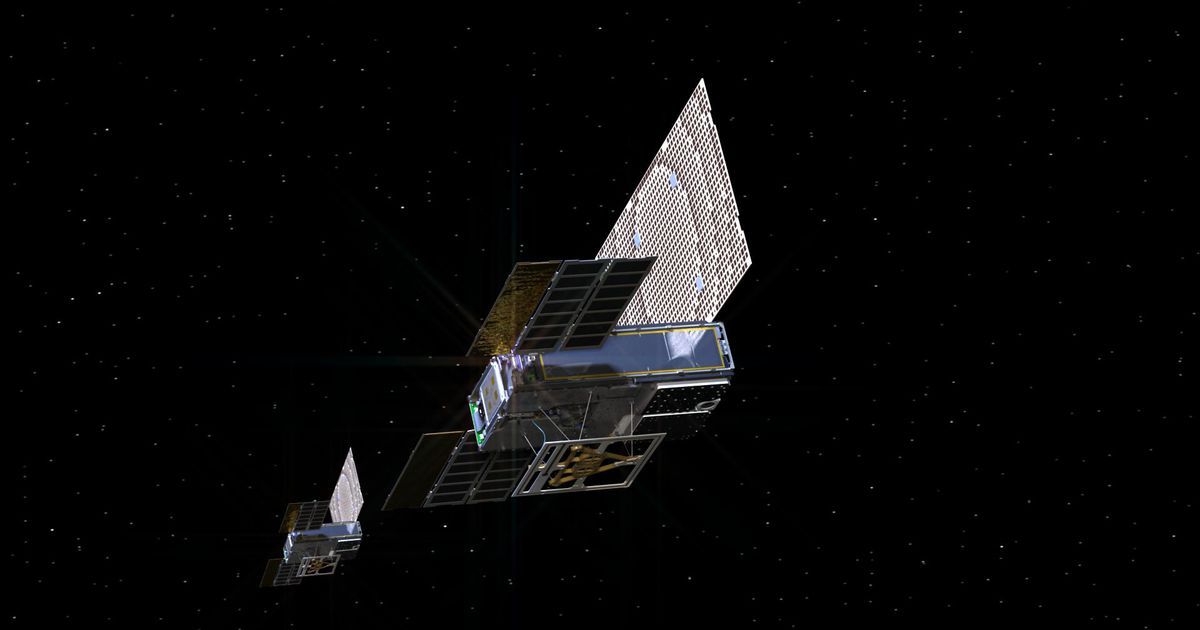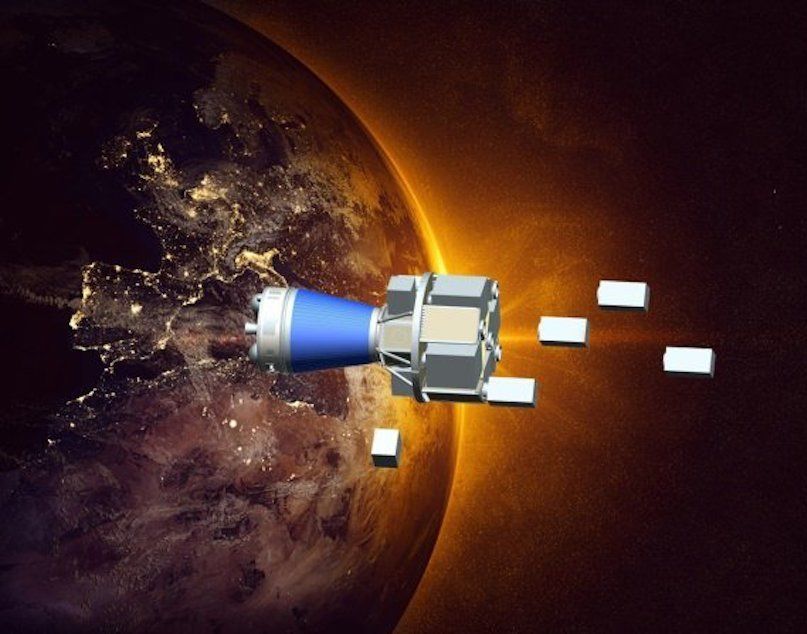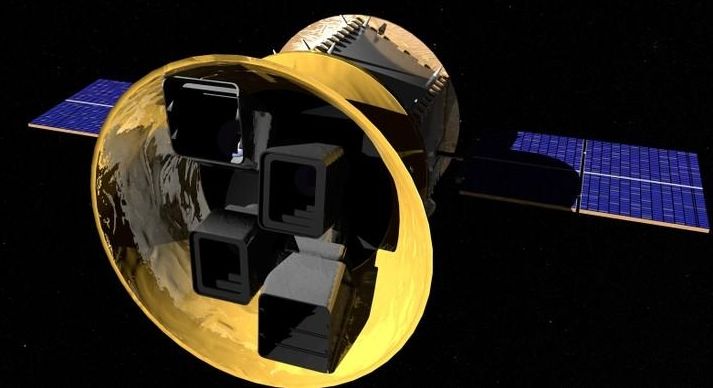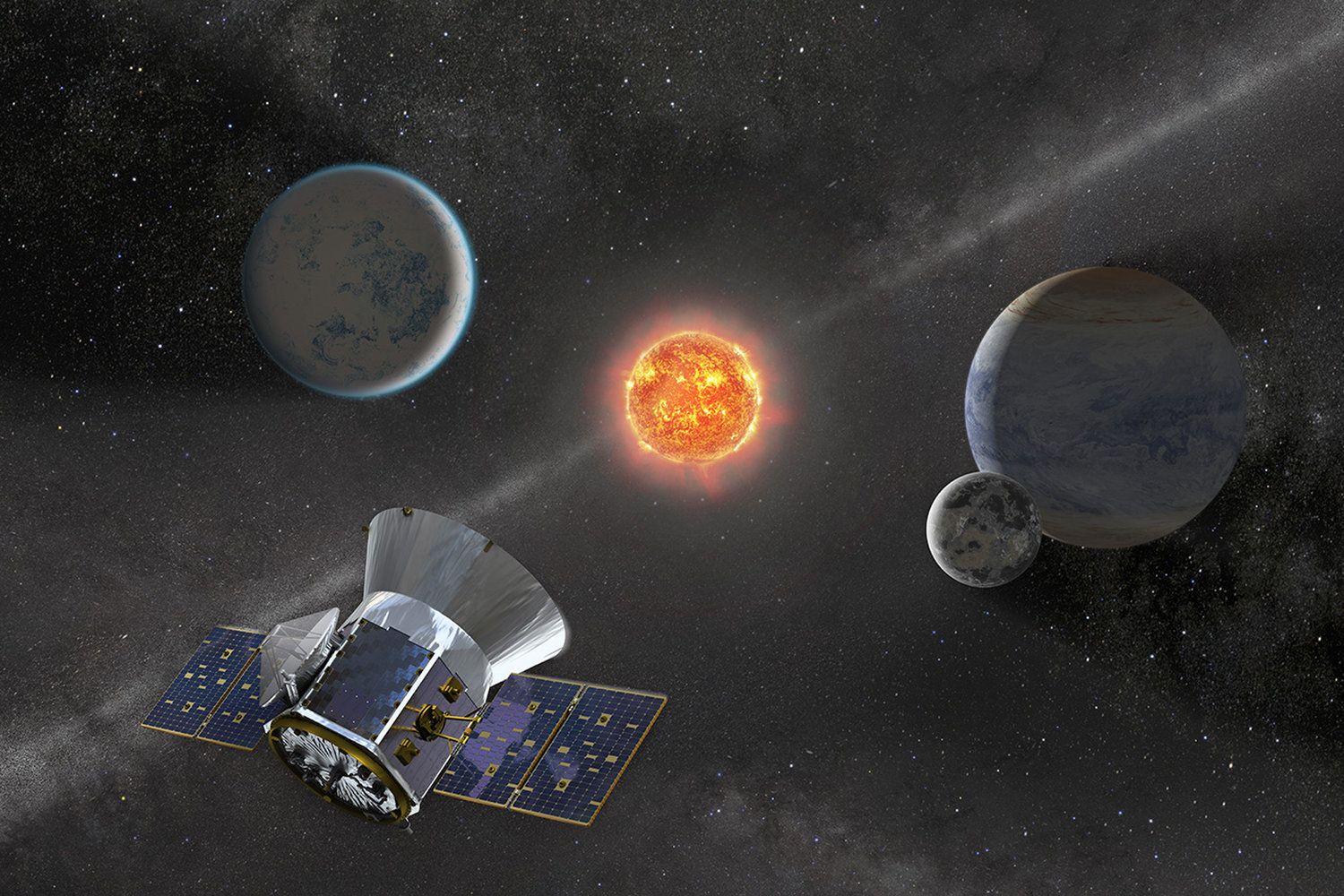Archive for the ‘satellites’ category: Page 162
May 3, 2018
Tiny satellites named Wall-E and Eva are about to take a trip to Mars. Will they survive?
Posted by Genevieve Klien in category: satellites
But if the tiny satellites do successfully work, similar low-cost satellites could be sent to other distant planets and moons, making communication with Earth from these deep reaches of space easier, and in some cases, possible at all.
When NASA lands a spacecraft on another planet, scientists generally need to have a “relay satellite” to beam images and measurements back to Earth.
Space exploration is hugely expensive, and cubesats could provide a much cheaper way to relay this information back home, rather than building and launching heavy spacecraft.
May 2, 2018
If Trump Gets His “Space Force,” It Would Likely Be Used to Defend Mining Operations
Posted by Klaus Baldauf in categories: geopolitics, law, military, satellites, treaties
For one thing, it appears to violate international law, according to Congressional testimony by Joanne Gabrynowicz, a space law expert at the University of Mississippi. Before NASA’s moon landing, the United States—along with other United Nations Security Council members and many other countries—signed the 1967 Outer Space Treaty. “Outer space, including the moon and other celestial bodies,” it states, “is not subject to national appropriation by claim of sovereignty, by means of use or occupation, or by any other means.” The 1979 Moon Agreement went further, declaring outer space to be the “common heritage of mankind” and explicitly forbidding any state or organization from annexing (non-Earth) natural resources in the solar system.
Major space-faring nations are not among the 16 countries party to the treaty, but they should arguably come to some equitable agreement, since international competition over natural resources in space may very well transform into conflict. Take platinum-group metals. Mining companies have found about 100,000 metric tons of the stuff in deposits worldwide, mostly in South Africa and Russia, amounting to $10 billion worth of production per year, according to the U.S. Geological Survey. These supplies should last several decades if demand for them doesn’t rise dramatically. (According to Bloomberg, supply for platinum-group metals is constrained while demand is increasing.)
Palladium, for example, valued for its conductive properties and chemical stability, is used in hundreds of millions of electronic devices sold annually for electrodes and connector platings, but it’s relatively scarce on Earth. A single giant, platinum-rich asteroid could contain as much platinum-group metals as all reserves on Earth, the Google-backed Planetary Resources claims. That’s a massive bounty. As Planetary Resources and other U.S. and foreign companies scramble for control over these valuable space minerals, competing “land grabs” by armed satellites may come next. Platinum-group metals in space may serve the same role as oil has on Earth, threatening to extend geopolitical struggles into astropolitical ones, something Trump is keen on preparing for. Yesterday he said he’s seriously weighing the idea of a “Space Force” military branch.
May 1, 2018
Swarm may have to answer for launching satellites without US permission
Posted by Genevieve Klien in categories: finance, government, satellites
What happens if you launch satellites into space without government permission, but with government funding?
We may find out soon, according to the Federal Communications Commission, which regulates satellite operations by US citizens and companies. It has completed an inquiry into the January launch of four small satellites built by a start-up called Swarm Technologies, and has referred the case to its enforcement bureau, according to a spokesperson.
The FCC, which does not comment on potential enforcement actions, can propose financial penalties and ban companies and individuals from operating satellites. Swarm’s CEO, Sara Spangelo, did not respond to a request for comment.
Continue reading “Swarm may have to answer for launching satellites without US permission” »
Apr 28, 2018
Transparent eel-like soft robot can swim silently underwater
Posted by Dan Kummer in categories: cyborgs, drones, robotics/AI, satellites, solar power, sustainability

Apparently needs a lot of work before it can actually operate like a eel/snake. But, i’d wrap this up in skin so it could look like a snake/eel. Give it solar power skin so it could recharge its own batteries; maybe try to use that system that was supposed to be able to eat organic matter to convert into power. Then, put a bunch of sensors on it, and HD cameras for eyes, and rig it so it could transmit to satellites. And you have a pretty impressive drone that can operate in any body of water and on land close to water.
An innovative, eel-like robot developed by engineers and marine biologists at the University of California can swim silently in salt water without an electric motor. Instead, the robot uses artificial muscles filled with water to propel itself. The foot-long robot, which is connected to an electronics board that remains on the surface, is also virtually transparent.
Continue reading “Transparent eel-like soft robot can swim silently underwater” »
Apr 24, 2018
Avio eyes larger chunk of smallsat launch market
Posted by Genevieve Klien in category: satellites
WASHINGTON — The light-lift Vega rocket is Europe’s vehicle of choice for small satellites, but has mainly launched spacecraft weighing hundreds of kilograms. While that’s smaller than what Arianespace normally launches on an Ariane 5 or Soyuz, it’s not the “small” that people generally think of when they think smallsats.
Last week, Arianespace signed a contract with smallsat rideshare organizer Spaceflight Industries of Seattle to conduct two Vega launches with a new adaptor for cubesats and microsats. The first of those launches is expected no sooner than 2019.
Spaceflight will line up the passengers for the Small Spacecraft Mission System (SSMS), an adapter developed by the European Space Agency to accommodate 10 to 15 smallsats ranging from single-digit-kilogram cubesats to microsats up to 400 kilograms.
Apr 24, 2018
SpaceX is launching NASA’s “planet hunter” a $337 million satellite
Posted by Shailesh Prasad in category: satellites
Apr 19, 2018
The US Military Will Award $10 million to the Company That Can Launch Satellites on Short Notice
Posted by Dan Kummer in categories: military, satellites
I guess the anti satellite missiles and lasers are a real threat now.
The Air Force is desperate to replace larger satellites that are vulnerable to attack, and fast.
US military leaders are bullish about small satellites as tools to spy on adversaries and provide secure communications, but there’s just one problem: There isn’t a good way to get them into space, on demand.
Apr 18, 2018
In Florida, all systems go for SpaceX’s launch of space telescope
Posted by Genevieve Klien in category: satellites
CAPE CANAVERAL, Fla. (Reuters) — SpaceX said all systems and weather were “go” for blast-off on Wednesday of its first high-priority science mission for NASA, a planet-hunting space telescope whose launch was delayed for two days by a rocket-guidance glitch.
FILE PHOTO: NASA’s Transiting Exoplanet Survey Satellite, scheduled to launch from Cape Canaveral Air Force Station in Florida, U.S., is shown in this artist’s rendering image obtained on April 9, 2018. Courtesy Chris Meaney/Goddard Space Flight Center/NASA/Handout via REUTERS.
Apr 16, 2018
NASA’s TESS Satellite Will Supercharge Search for Nearby, Earth-Like Worlds
Posted by Genevieve Klien in categories: alien life, satellites
On Monday, April 16, the Transiting Exoplanet Survey Satellite (TESS) will launch from Cape Canaveral Air Force Station in Florida. NASA’s new exoplanet hunter will train its sights on nearer, brighter stars than its predecessors did. If TESS lives up to scientists’ predictions, it could energize our search for life in the cosmos.
When the Kepler space telescope launched in 2009, scientists didn’t know what fraction of stars hosted planets. The Kepler mission was a statistical exploration looking to see how frequently planets occur around stars, Harvard astronomer David Latham told Space.com. “One of the big surprises from Kepler was to find this whole population of planets with sizes between that of Neptune and Earth — and there aren’t any in our solar system, zero — and they’re everywhere out there,” said Latham, who’s worked on the Kepler project for nearly 20 years.
“Kepler is what made us become aware that planets are as common as telephone poles,” SETI Institute astronomer Seth Shostak told Space.com.” But the stars that Kepler was staring at for four years … they were all somewhere between 500 and 1,500 light-years away.” TESS will survey the local neighborhood for planets like Earth. [NASA’s TESS Exoplanet-Hunter in Pictures].
Continue reading “NASA’s TESS Satellite Will Supercharge Search for Nearby, Earth-Like Worlds” »

















